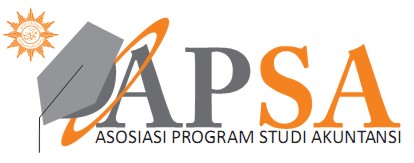The Effect of Corporate Governance Mechanism on Intellectual Capital Disclosure of High IC-Intensive Companies in Indonesia and Malaysia
DOI:
https://doi.org/10.18196/jai.v23i1.10650Keywords:
Intellectual Capital Disclosure, Corporate Governance Mechanism, High IC-Intensive CompaniesAbstract
Research aims: This study examines the effect of corporate governance mechanisms, such as board size, CEO duality, number of the audit committee, board gender, and family ownership, on intellectual capital disclosures.
Design/Methodology/Approach: The sample study was high intellectual capital (IC)-intensive companies listed on the Indonesia Stock Exchange and Malaysia Stock during 2017-2018.
Research findings: For Indonesia, the results revealed that the number of the audit committee and board size had a positive and significant effect on intellectual capital disclosures. Meanwhile, in Malaysia, the results showed that audit committees had a positive and significant effect on intellectual capital disclosures.
Theoretical contribution/Originality: This study adds literature on the effect of corporate governance mechanisms on intellectual capital disclosure of high IC-intensive companies in the development of the country context.
References
Abeysekera, I. (2010). The influence of board size on intellectual capital disclosure by Kenyan listed firms. Journal of Intellectual Capital, 11(4), 504-518. Retrieved from http://citeseerx.ist.psu.edu/viewdoc/download?doi=10.1.1.303.7477&rep=rep1&type=pdf
Ahmad‐Zaluki, N. A., & Nordin Wan‐Hussin, W. (2010). Corporate governance and earnings forecasts accuracy. Asian Review of Accounting, 18(1), 50–67. https://doi.org/10.1108/13217341011046006
Ahmed Haji, A. (2015). The role of audit committee attributes in intellectual capital disclosures. Managerial Auditing Journal, 30(8/9), 756–784. https://doi.org/10.1108/maj-07-2015-1221
Ahmed Haji, A., & Mohd Ghazali, N. A. (2012). Intellectual capital disclosure trends: some Malaysian evidence. Journal of Intellectual Capital, 13(3), 377–397. https://doi.org/10.1108/14691931211248927
Akhtaruddin, M., & Haron, H. (2010). Board ownership, audit committees' effectiveness and corporate voluntary disclosures. Asian Review of Accounting, 18(1), 68-82. https://doi.org/10.1108/13217341011046015
Anderson, R. C., & Reeb, D. M. (2003). Founding-family ownership and firm performance: evidence from the S&P 500. The Journal of Finance, 58(3), 1301–1328. https://doi.org/10.1111/1540-6261.00567
Anggeline, E. M., & Novita, N. (2020). Implikasi mekanisme corporate governance terhadap pengungkapan intellectual capital. Jurnal Akuntansi Trisakti, 7(1), 55-74. https://doi.org/10.25105/jat.v7i1.6401
Anna, Y. D., & Dwi, D.R. (2018). Pengaruh karakteristik perusahaan dan corporate governance terhadap intellectual capital disclosure serta dampaknya terhadap nilai perusahaan. Jurnal Riset Akuntansi dan Keuangan, 6(2), 233-246. Retrieved from http://ejournal.upi.edu/index.php/JRAK/article/view/11960
Arifah, D. A. (2012). Pengaruh mekanisme corporate governance terhadap pengungkapan intellectual capital: pada perusahaan IC intensive. Jurnal Akuntansi dan Keuangan Indonesia, 9(2), 189–211. https://doi.org/10.21002/jaki.2012.12
Azman, H., & Kamaluddin, A. (2012) Corporate governance mechanisms and intellectual capital disclosure in Malaysian GLCs. Proceeding 3rd International Conference on Business and Economic Research.
BAPEPAM. (2012). BAPEPAM No KEP-643/BL/2012, Pembentukan dan Pedoman Pelaksanaan Kerja Komite Audit. Retrieved from https://www.ojk.go.id/Files/regulasi/pasar-modal/bapepam-pm/emiten-pp/peraturan-lain/6.IX.I.5.pdf
Barako, D. G., & Brown, A. M. (2008). Corporate social reporting and board representation: evidence from the Kenyan banking sector. Journal of Management & Governance, 12(4), 309–324. https://doi.org/10.1007/s10997-008-9053-x
Berg, S. V., & Smith, S. K. (1978). CEO and board chairman: A quantitative study of dual vs. unitary board leadership. Directors & Boards, Spring: 34–39.
Burgess, Z., & Tharenou, P. (2002). Women board directors: characteristics of the few. Journal of Business Ethics, 37, 39–49. https://doi.org/10.1023/A:1014726001155
Carter, D. A., Simkins, B. J., & Simpson, W. G. (2003). Corporate governance, board diversity, and firm value. The Financial Review, 38(1), 33–53. https://doi.org/10.1111/1540-6288.00034
Cerbioni, F., & Parbonetti, A. (2007). Exploring the effects of corporate governance on intellectual capital disclosure: an analysis of European biotechnology companies. European Accounting Review, 16(4), 791–826. https://doi.org/10.1080/09638180701707011
Charness, G., & Gneezy, U. (2007). Strong evidence for gender differences in investment. 1-22. https://doi.org/10.2139/ssrn.648735
Djafar, F. (2012). Dynamics of push and pull factors of migrant workers in developing countries: the case of indonesian workers in Malaysia. Journal of Economics and Behavioral Studies, 4(12), 703–711. https://doi.org/10.22610/jebs.v4i12.370
European Commission (EC). (2011). GREEN PAPER The EU corporate governance framework. Retrieved from https://op.europa.eu/en/publication-detail/-/publication/3eed7997-d40b-4984-8080-31d7c4e91fb2/language-en
Fernandez-Feijoo, B., Romero, S., & Ruiz, S. (2012). Does board gender composition affect corporate social responsibility reporting?. International Journal of Business and Social Science, 3(1), 31-38. Retrieved from http://www.ijbssnet.com/journals/Vol_3_No_1_January_2012/4.pdf
García-Ramos, R., & García-Olalla, M. (2011). Board characteristics and firm performance in public founder- and nonfounder-led family businesses. Journal of Family Business Strategy, 2(4), 220–231. https://doi.org/10.1016/j.jfbs.2011.09.001
Hardiani, A. N., Ulum, I., & Zubaidah, S. (2017). Pengaruh mekanisme corporate governance terhadap luas pengungkapan modal intelektual: studi pada perusahaan sektor perbankan. Jurnal Reviu Akuntansi dan Keuangan, 6(1), 823–830. https://doi.org/10.22219/jrak.v6i1.5078
Hidalgo, R. L., García-Meca, E., & Martínez, I. (2010). corporate governance and intellectual capital disclosure. Journal of Business Ethics, 100(3), 483–495. https://doi.org/10.1007/s10551-010-0692-x
Ibrahim, H., & Samad, F. A. (2011). Corporate governance mechanisms and performance of public-listed family-ownership in Malaysia. International Journal of Economics and Finance, 3(1). https://doi.org/10.5539/ijef.v3n1p105
Indah, N., & Handayani, S. (2017). Pengaruh corporate governance terhadap intellectual capital disclosure. Diponegoro Journal of Accounting, 6(3), 471-478. Retrieved from https://ejournal3.undip.ac.id/index.php/accounting/article/view/19252
Jensen, M. C., & Meckling, W. H. (1976). Theory of the firm: Managerial behavior, agency costs and ownership structure. Journal of Financial Economics, 3(4), 305–360. https://doi.org/10.1016/0304-405x(76)90026-x
Krishnan, H. A., & Park, D. (2005). A few good women—on top management teams. Journal of Business Research, 58(12), 1712–1720. https://doi.org/10.1016/j.jbusres.2004.09.003
Lasturi Sinaga, A., & Sudarno, S. (2019). Pengaruh tata kelola perusahaan terhadap pengungkapan modal intelektual. Diponegoro Journal of Accounting, 7(4). Retrieved from https://ejournal3.undip.ac.id/index.php/accounting/article/view/25623
Li, J., Mangena, M., & Pike, R. (2012). The effect of audit committee characteristics on intellectual capital disclosure. The British Accounting Review, 44(2), 98–110. https://doi.org/10.1016/j.bar.2012.03.003
Li, J., Pike, R., & Haniffa, R. (2008). Intellectual capital disclosure and corporate governance structure in UK firms. Accounting and Business Research, 38(2), 137–159. https://doi.org/10.1080/00014788.2008.9663326
Li, J., Pike, R.H., & Haniffa, R.M. (2007). Intellectual capital disclosure in knowledge rich firms: the impact of market and corporate governance factors. Bradford University School of Management Working Paper Series. No. 07/06. Retrieved from https://core.ac.uk/download/pdf/153513721.pdf
Maury, B. (2006). Family ownership and firm performance: Empirical evidence from Western European corporations. Journal of Corporate Finance, 12(2), 321–341. https://doi.org/10.1016/j.jcorpfin.2005.02.002
Moeinfar, Z., Amouzesh, N., & Mousavi, Z. (2013). Intellectual Capital Disclosure and Corporate Governance. International Research Journal of Applied and Basic Sciences, 4, 1962-1965. Retrieved from https://irjabs.com/files_site/paperlist/r_937_130727172316.pdf
OECD. (2015). G20/OECD Principles of Corporate Governance. OECD Publishing, Paris. https://doi.org/10.1787/9789264236882-en
Oliveras, E., Gowthorpe, C., Kasperskaya, Y., & Perramon, J. (2008). Reporting intellectual capital in Spain. Corporate Communications: An International Journal, 13(2), 168–181. https://doi.org/10.1108/13563280810869596
Palanissamy, A. (2015). CEO duality – an explorative study. European Scientific Journal, ESJ, 11(10). Retrieved from https://eujournal.org/index.php/esj/article/view/6677
Pricewaterhouse Coopers (PwC). (2011). Audit Committee Effectiveness What Works Best, 4th Edition. The Institute of Internal Auditors Research Foundation. Retrieved from https://www.pwc.com/jg/en/publications/audit-comm-effectiveness-what-works-best-2011.pdf
Rahman, R. A., & Haniffa, R. M. (2005). The effect of role duality on corporate performance in Malaysia. Corporate Ownership and Control, 2(2), 40-47. Retrieved from https://www.readcube.com/articles/10.22495%2Fcocv2i2p4
Rechner, P. L., & Dalton, D. R. (1989). The impact of CEO as board chairperson on corporate performance: evidence vs. rhetoric. Academy of Management Perspectives, 3(2), 141–143. https://doi.org/10.5465/ame.1989.4274764
Rodrigues, L. L., Tejedo-Romero, F., & Craig, R. (2016). Corporate governance and intellectual capital reporting in a period of financial crisis: Evidence from Portugal. International Journal of Disclosure and Governance, 14(1), 1–29. https://doi.org/10.1057/jdg.2015.20
Swartz, N., & Firer, S. (2005). Board structure and intellectual capital performance in South Africa. Meditari Accountancy Research, 13(2), 145–166. https://doi.org/10.1108/10222529200500017
Taliyang, S. M., & Jusop, M. (2011). Intellectual capital disclosure and corporate governance structure: evidence in Malaysia. International Journal of Business and Management, 6(12). https://doi.org/10.5539/ijbm.v6n12p109
Ulum, I., Tenrisumpala, A., & Wahyuni, E. D. (2016). Intellectual capital disclosure: studi komparasi antara universitas di Indonesia dan Malaysia. Akuntabilitas, 9(1), 13-26. https://doi.org/10.15408/akt.v9i1.3582
Wahyuni, M.A., & Rasmini, N.K. (2016). Pengaruh mekanisme corporate governance pada pengungkapan modal intelektual (Studi empiris pada perusahaan manufaktur yang terdaftar di Bursa Efek Indonesia). Buletin Studi Ekonomi, 48–59. Retrieved from https://ojs.unud.ac.id/index.php/bse/article/view/22298
Webb, K.A., Cahan, S.F., & Sun, J. (2008). The effect of globalization and legal environment on voluntary disclosure. The International Journal of Accounting, 43(3), 219-245. Retrieved from https://core.ac.uk/download/pdf/72764834.pdf
Widarjo, W., Rahmawati, R., Bandi, B., & Widagdo, A. K. (2019). Underpricing and Intellectual Capital Disclosure: Evidence from Indonesia. Global Business Review, https://doi.org/10.1177%2F1465750319857017
Woodcock, J., & Whiting, R. H. (2009). Intellectual capital disclosures by Australian companies (Working Paper). AFAANZ Conference. Retrieved from http://hdl.handle.net/10523/1583
World Economic Forum. (2017). The Global Human Capital Report 2017. Retrieved from https://www.weforum.org/reports/the-global-human-capital-report-2017
Downloads
Published
How to Cite
Issue
Section
License
License
 Journal of Accounting and Investment is licensed under Creative Commons Attribution Attribution-NonCommercial-NoDerivatives 4.0 International License.
Journal of Accounting and Investment is licensed under Creative Commons Attribution Attribution-NonCommercial-NoDerivatives 4.0 International License.




